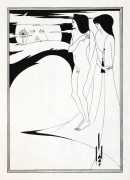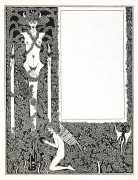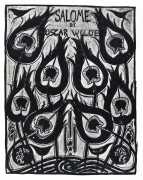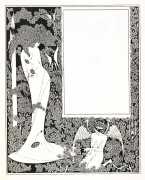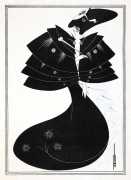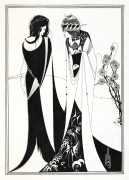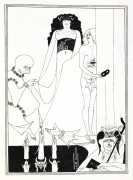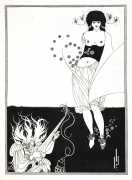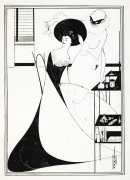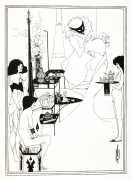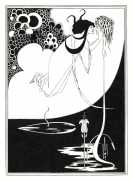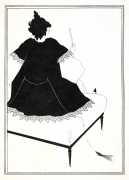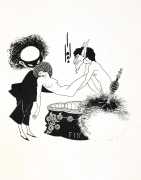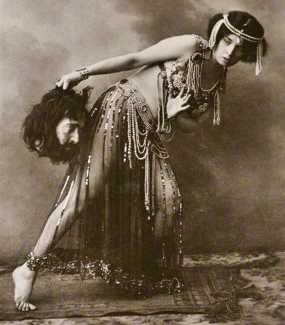
When Oscar Wilde’s notorious play Salomé was first published in February 1893, the Pall Mall Budget magazine asked Aubrey Beardsley for a drawing in response. They rejected the macabre, fantastic image he based on the play’s last scene, in which Salomé embraces the severed head of John the Baptist. In April 1893 however, The Studio ran it as part of its first edition. Wilde saw the drawing and liked it very much; he inscribed a presentation copy of The Studio ‘For Aubrey, the only artist who, besides myself, knows what the Dance of the Seven Veils is, and can see that invisible dance’.
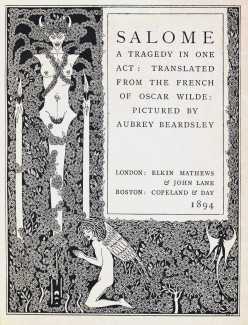
Wilde’s Salomé was published in book form in 1894, the London edition by Elkin Mathews and John Lane, the Boston edition by Copeland and Day. When the publishers saw the Studio drawings, they objected to the fact that figure on the title page had both male and female sexual characteristics; at their request, Beardsley erased them. In ‘Enter Herodias’, he was asked to insert a fig leaf to cover some genitals, and ‘Salomé on settle’ and ‘John and Salomé’ were removed entirely.
The critic Peter Raby argues that ‘Beardsley gave the text its first true public and modern performance, placing it firmly within the 1890s – a disturbing framework for the dark elements of cruelty and eroticism, and of the deliberate ambiguity and blurring of gender, which he released from Wilde’s play as though he were opening Pandora’s box.’
A fascinating and detailed analysis by Yelena Primorac of the Aubrey Beardsley illustrations for Salomé can be found on the Victorian Web website


